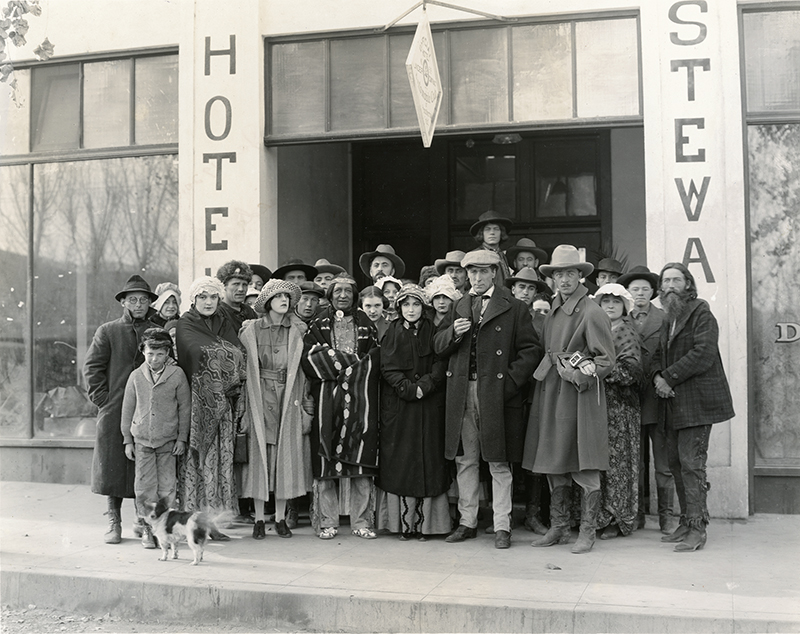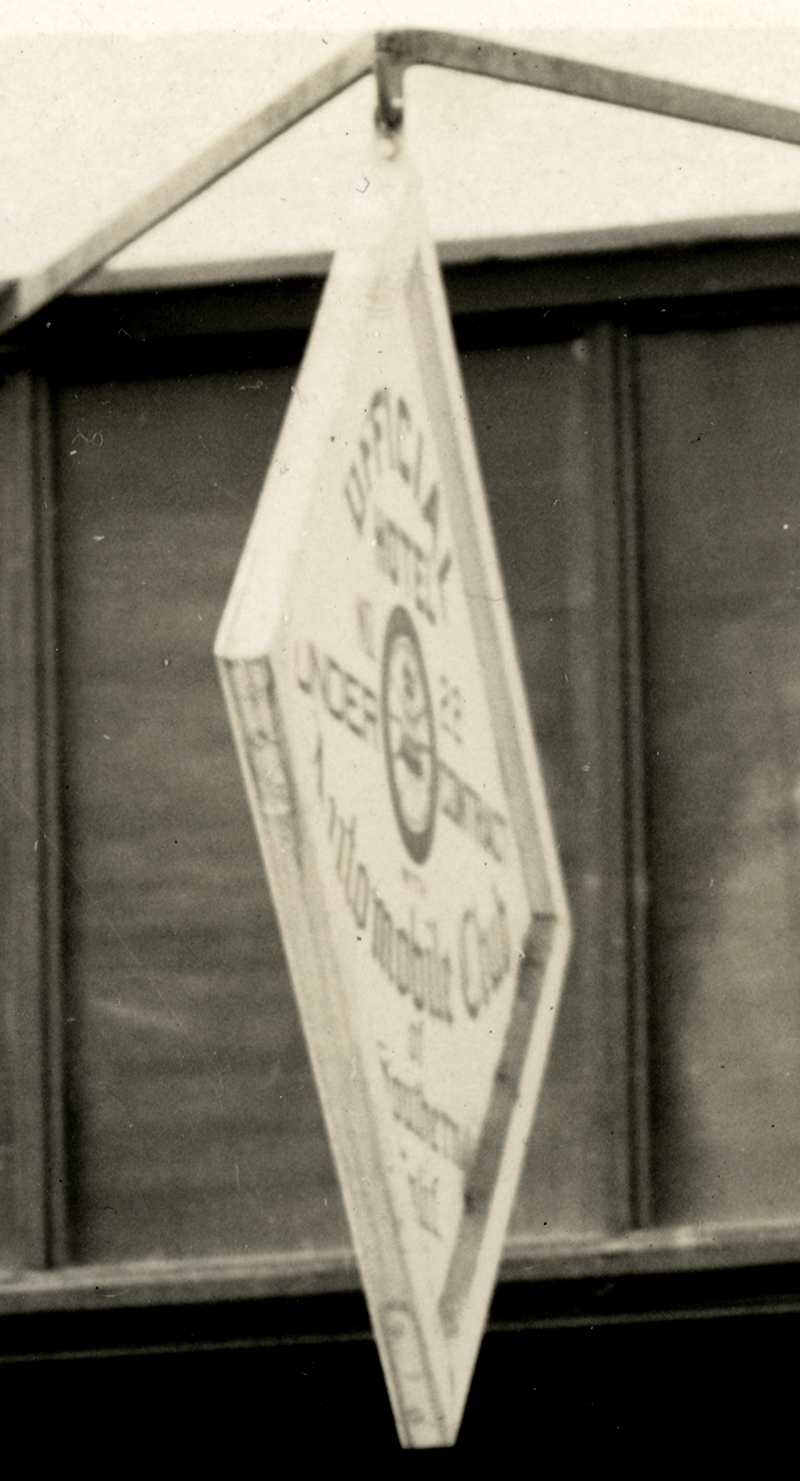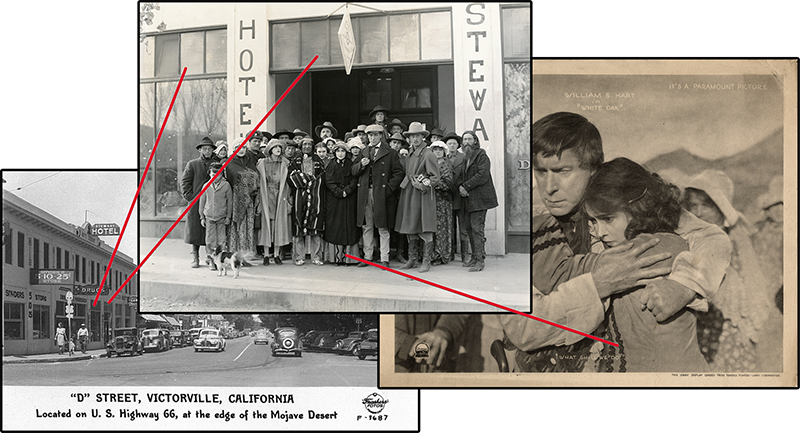William S. Hart & "White Oak" Company
Victorville, California

Click image to enlarge
| Download archival scan
About "White Oak." Produced by the William S. Hart Company; distributed by Paramount-Artcraft; released December 18, 1921; ©August 15, 1921; seven reels (6208 feet). Directed by Lambert Hillyer; screenplay by Bennet Musson from the story "Single Handed" by William S. Hart; photographed by Joe August; art director, J. C. Hoffner; edited by William O'Shea; art titles by Harry Barndollar. CAST: William S. Hart (Oak Miller); Vola Vale (Barbara); Alexander Gaden (Mark Granger); Robert Walker (Harry); Bertholde Sprotte (Eliphalet Moss); Helen Holly (Rose Miller); Standing Bear (Chief Long Knife). SYNOPSIS: Oak Miller, square gambler, deals cards at the Red Fort Saloon, Independence, Missouri, and watches for a chance to punish the man who deceived his sister Rose with a promise of marriage. Rose is ill and under the care of Barbara, with whom Oak is in love. Eliphalet Moss, stepfather of Barbara, is jealous of Oak. Granger, the man Oak is searching for, comes to town disguised and determines to possess Barbara. Granger plots with Chief Long Knife to attack a rich emigrant train. The chief is unaware that Granger misused his daughter, Little Fawn. Rose dies. Barbara's stepfather tries to enter the cabin at night and is shot to death by her brother Harry, a tool of Granger's. Barbara is suspected of the crime. To save her, Oak robs Moss's bank and leaves evidence pointing to himself as the robber. Oak is arrested for murder. The emigrant train is attacked [by Indians]. Barbara sends a dog with a message for Oak. He breaks jail, goes to the rescue of the emigrants and the Indians are repulsed [when he captures Chief Long Knife as a hostage]. Long Knife kills Granger. Barbara and Oak are united. [Exhibitor's Trade Review, November 12, 1921] REVIEWS: Once again Bill Hart has undertaken to write his own story and if he can continue the good work there's no reason why he shouldn't, for White Oak is a splendid picture. ... It contains plenty of action, fine detail and a real atmosphere of the old West with Injuns 'n' everything. And best of all it offers probably the most popular of Western portrayers in a role ideally suited to him. As usual, Hart does fine work. ...[Wid's, November 6, 1921] The star's fans will find White Oak immensely interesting, for it presents him in his best-liked role of a hard-riding, straight-shooting man. The continuity is smooth and the suspense well built up. Some of the exterior scenes, too, are especially striking, notably those where the Indians circle in clouds of dust around the beleaguered caravan. But it does tax the imagination a bit to see the hero's revolver bringing down galloping Indians a quarter of a mile away. Perhaps our own lack of skill with the weapon makes us unduly skeptical, but we should like to see such shooting in real life. [Sumner Smith, Moving Picture World, November 12, 1921]
LW3670: 9600 dpi jpeg from original photograph purchased 2019 by Leon Worden.
|






